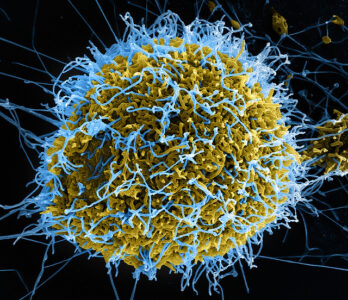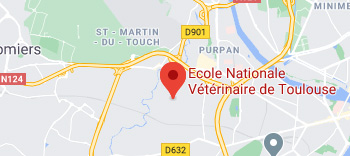Beaucoup de zones d’ombres persistent sur la manière dont les virus évoluent. Et si les propriétés du génome des virus pouvaient influencer les événements de mutation, et dans certains cas, orienter l’évolution du virus vers des trajectoires spécifiques ?
Gabriel Dupré et Romain Volmer, deux chercheurs de l’ENVT, réfléchissent à cette question et apportent des éléments de réponse dans la prestigieuse revue scientifique Trends in Genetics.
 Abstract
Abstract
The first step of viral evolution takes place during genome replication via the errorprone viral polymerase. Among the mutants that arise through this process, only a few well-adapted variants will be selected by natural selection, renewing the viral genome population. Viral polymerase-mediated errors are thought to occur stochastically. However, accumulating evidence suggests that viral polymerasemediated mutations are heterogeneously distributed throughout the viral genome. Here, we review work that supports this concept and provides mechanistic insights into how specific features of the viral genome could modulate viral polymerase-mediated errors. A predisposition to accumulate viral polymerasemediated errors at specific loci in the viral genome may guide evolution to specific pathways, thus opening new directions of research to better understand viral evolutionary dynamics.
Viral polymerase errors during genome copy and the filter of selection
It is straightforward to define an evolving virus by its capacity to create numerous genome variants in its progeny. The cloud of viral genome descendants, initially described in the case of RNA viruses because of the high error rate of viral RNA polymerases, is defined as viral quasispecies. This property has profound consequences on viral evolutionary dynamics, regulating viral fitness, immune escape, drug resistance, virulence, host adaptation, and ‘social’ interactions between variants, detailed in the following reviews. Specific errors or mutations are fixed by natural selection and then passed down, after the action of multiple filters or bottlenecks that reduce the size of the mutant spectrum population. Parts of the genome encoding for more plastic protein domains are more tolerant to mutations, favouring mutation accumulation in these loci. Moreover, parts of the viral particle are subjected to strong immune response-mediated bottlenecks, which tend to select immune-escaping viruses harbouring new antigenic sites. Consequently, these antigenic sites are associated with high nucleotide variability. Viral glycoproteins (GPs), which constitute major targets of the immune response, evolve more rapidly than other viral proteins. On the contrary, some internal proteins are less tolerant to mutations and are more evolutionary stable, probably because they are hidden from neutralising antibodies and are composed of domains that are structurally and/or functionallymore constrained.





















































































































